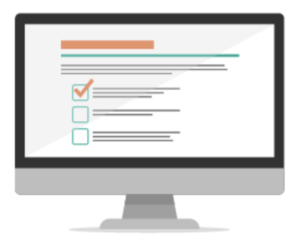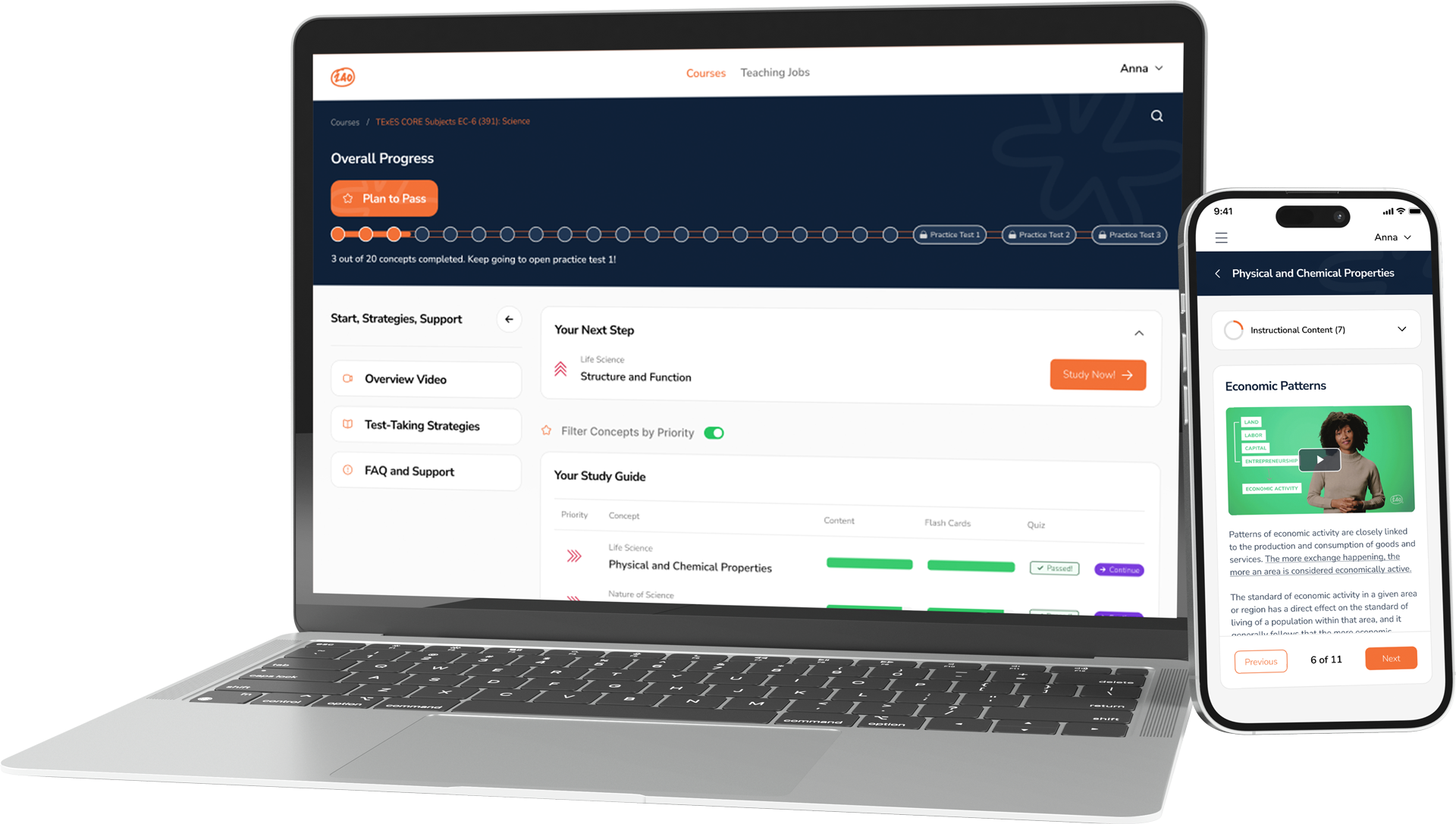How Hard is the PPR?
The difficulty of the TExES PPR may seem different to different people, depending on their individual background, strengths, and level of experience. In general, most test-takers pass the TExES PPR. The passing rate for 2018-2019 was 81%. However, it is still possible to fail an exam with a high pass rate. Effective preparation is the key to ensuring a passing score.
How Do You Pass the PPR?
Follow these steps to pass the TExES PPR:

- Register for the exam
Registering for the exam includes paying the test fee and choosing a test location and appointment time. You can look up test centers in your area and learn more about required fees on the TExES PPR website.
- Build a study plan
A study plan is like a combined calendar and to-do list. Allocate regular times to study and set achievable goals so that you can thoroughly cover all the content before test day.
- Study
Follow your study plan and study for the exam. Studying should include enough time to learn about the test, review each study guide 2-3 times, and work practice problems, including at least one full-length practice test.
- Make a test-day routine
Making a test day routine will make your test appointment go smoothly and allow your brain to stay focused on passing the exam. A test-day routine could include a healthy breakfast, choosing comfortable clothes, and rechecking all test materials and test center rules before leaving home. Check out this video covering some testing trips and strategies.
- Take the test
Remember to pace yourself and stick with the strategies you practiced while studying. Read instructions thoroughly, answer every question, and check your work if there’s enough time.
- Receive your score report
Congratulations! You passed!
Where Do You Find Resources for the PPR?
There are many resources available for the TExES PPR. 240 Tutoring gives you access to comprehensive study guides and accurate test details to help you improve your score. Simply visit the TExES section to see all of the study guides that are offered. Additionally, you can find some materials to get started on your study journey on the TExES PPR website.
What are the Best Resources to Use to Study for the PPR?
The best resources to use to prepare for the TExES PPR are information about the test, study guides, and practice problems. Reading test information about how to register, the exam structure, and scoring is an easy way to reduce test anxiety and improve performance. Study guides help to guide your studying. Following a study guide is an effective way to review all the material that could be on the TExES PPR. Finally, working practice problems trains you in exam pacing and can help you become familiar with the different types of test questions.

How Do You Use Study Guides to Study for the PPR?
Study guides organize content from the TExES PPR exam so that the information is engaging and easy to remember. Using a study guide can be more effective than studying from raw material such as lectures and textbooks because the information is specific to the exam. Study guides include text, graphic organizers, and illustrations to break up the information and improve understanding.
When reviewing a study guide for the first time, note any confusion or questions that come up as you read. Then expand on your notes by searching academic sources such as journals, textbooks, or lectures. After you understand all the information from one topic, move on to the next one. It is best practice to review study guides two or three times before the test day. Each time you review, go through the same process of marking new questions and expanding on the material. It’s okay if each successive review goes a little faster than the previous one. Repeated reviews ensure that the information is both stored in long-term memory and fresh on your mind for test day.
When Should You Study for the PPR?
For best results, start studying early. Setting up your study plan one to two months before the test date will ensure that you have enough time to thoroughly review all the material without sacrificing your normal routine. For example, a study plan could set aside 90 minutes MWF to review study guides and learn about the test and two hours on Saturday to work practice problems. Starting early will also give you flexibility in the case of a surprise schedule change. Consistency is key, but it’s also okay to make small adjustments when you have to. Stay on track to achieve your goals.
DO NOT try to cram the material a few days before the exam. Cramming is not an effective study strategy and it can lead to a loss of sleep and interfere with other important daily tasks. Trying to cram the information instead of following a study plan will lead to higher stress levels and lower retention, which can negatively affect exam performance. When you prepare effectively, you can take the test with confidence that you’ve put in your best effort. But if you have no choice but to cram because you are out of time, check out what Dr. Kristy Mulkey has to say about effective cramming.
How Much Should You Study for the PPR?
How much you should study for the TExES PPR will depend on your academic background and professional experience. Each person’s study plan should be unique to their study needs and goals. Remember to start studying early to leave yourself enough time and flexibility to fully cover all topics in the study guides. People may use different study strategies depending on their strengths and weaknesses. For example, say a prospective test-taker is the weakest on questions about Competency 003. That person might spend more time studying Competency 003 to improve their skills and understanding, or they might spend more time on the other competencies in Domain 1 so that any missed questions in the harder section will have less impact on their total score.
Check out all of our TExES study resources!






